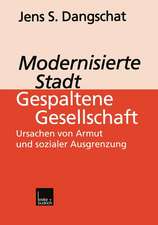AVENUE21. Connected and Automated Driving: Prospects for Urban Europe
Autor Mathias Mitteregger, Emilia M. Bruck, Aggelos Soteropoulos, Andrea Stickler, Martin Berger, Jens S. Dangschat, Rudolf Scheuvens, Ian Banerjeeen Limba Engleză Paperback – 8 oct 2021
| Toate formatele și edițiile | Preț | Express |
|---|---|---|
| Paperback (1) | 356.49 lei 6-8 săpt. | |
| Springer Berlin, Heidelberg – 8 oct 2021 | 356.49 lei 6-8 săpt. | |
| Hardback (1) | 436.35 lei 3-5 săpt. | |
| Springer Berlin, Heidelberg – 8 oct 2021 | 436.35 lei 3-5 săpt. |
Preț: 356.49 lei
Nou
Puncte Express: 535
Preț estimativ în valută:
68.22€ • 70.79$ • 57.02£
68.22€ • 70.79$ • 57.02£
Carte tipărită la comandă
Livrare economică 17-31 martie
Preluare comenzi: 021 569.72.76
Specificații
ISBN-13: 9783662641422
ISBN-10: 3662641429
Pagini: 179
Ilustrații: XVI, 179 p. 138 illus., 60 illus. in color.
Dimensiuni: 210 x 279 mm
Greutate: 0.45 kg
Ediția:1st ed. 2022
Editura: Springer Berlin, Heidelberg
Colecția Springer Vieweg
Locul publicării:Berlin, Heidelberg, Germany
ISBN-10: 3662641429
Pagini: 179
Ilustrații: XVI, 179 p. 138 illus., 60 illus. in color.
Dimensiuni: 210 x 279 mm
Greutate: 0.45 kg
Ediția:1st ed. 2022
Editura: Springer Berlin, Heidelberg
Colecția Springer Vieweg
Locul publicării:Berlin, Heidelberg, Germany
Cuprins
Connected and automated transport.- Approach and key areas of focus.- Status quo.- Connected and automated transport in the Long Level 4.- Shaping change at the local level during the transition period.- Action plans.- Research team.- bibliography.
Notă biografică
An interdisciplinary team at the Faculty for Architecture and Planning at the TU Wien (Vienna University of Technology) jointly worked on this publication. Funded by the Daimler and Benz Foundation, the aim was to question common narratives of spatial and societal impacts of connected and automated vehicles. Thus, the team consists of architects, spatial planners, sociologists and transport system planners.
Mathias Mitteregger is in charge of the research project AVENUE21 at the Vienna
University of Technology, which is funded by the Daimler and Benz Foundation and
investigates the opportunities and risks of automated vehicles for urban development in
Europe. In research and planning projects, he deals with the question of how new
technologies change perception, design and ultimately life in cities. He completed his
dissertation in architectural theory at the TU Vienna.Textul de pe ultima copertă
This open access publication examines the impact of connected and automated vehicles on the European city and the conditions that can enable this technology to make a positive contribution to urban development. The authors argue for two theses that have thus far received little attention in scientific discourse: as connected and automated vehicles will not be ready for use in all parts of the city for a long time, previously assumed effects – from traffic safety to traffic performance as well as spatial effects – will need to be re-evaluated. To ensure this technology has a positive impact on the mobility of the future, transport and settlement policy regulations must be adapted and further developed. Established territorial, institutional and organizational boundaries must be investigated and challenged quickly. Despite – or, indeed, because of – the many uncertainties, we find ourselves at the beginning of a new design phase, not only in terms of technology development, but also regarding politics, urban planning, administration and civil society.
Caracteristici
The largest and most comprehensive international survey on the effects of self driving cars so far. Three scenarios (policy-driven market-driven community-driven) to show paths into possible automated futures A different perspective for urban decision makers on CAVs as the work reflects common narratives This book is open access, which means that you have free and unlimited access

















